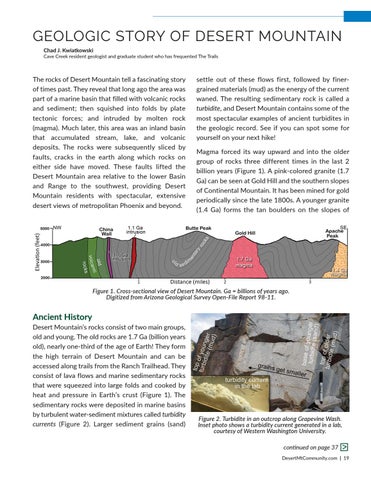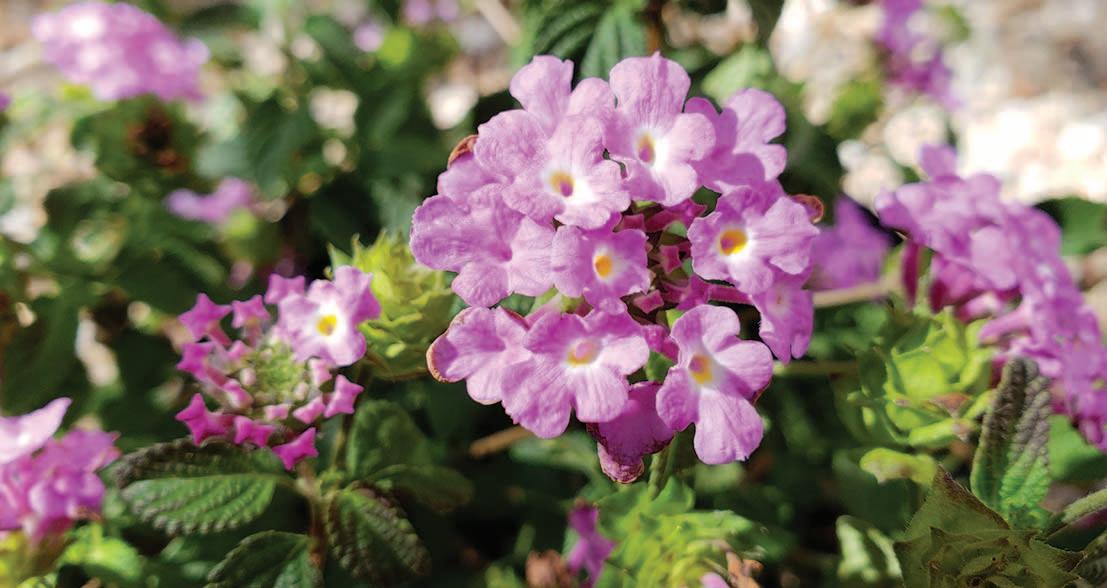GEOLOGIC STORY OF DESERT MOUNTAIN Chad J. Kwiatkowski Cave Creek resident geologist and graduate student who has frequented The Trails
The rocks of Desert Mountain tell a fascinating story of times past. They reveal that long ago the area was part of a marine basin that filled with volcanic rocks and sediment; then squished into folds by plate tectonic forces; and intruded by molten rock (magma). Much later, this area was an inland basin that accumulated stream, lake, and volcanic deposits. The rocks were subsequently sliced by faults, cracks in the earth along which rocks on either side have moved. These faults lifted the Desert Mountain area relative to the lower Basin and Range to the southwest, providing Desert Mountain residents with spectacular, extensive desert views of metropolitan Phoenix and beyond.
settle out of these flows first, followed by finer grained materials (mud) as the energy of the current waned. The resulting sedimentary rock is called a turbidite, and Desert Mountain contains some of the most spectacular examples of ancient turbidites in the geologic record. See if you can spot some for yourself on your next hike! Magma forced its way upward and into the older group of rocks three different times in the last 2 billion years (Figure 1). A pinkcolored granite (1.7 Ga) can be seen at Gold Hill and the southern slopes of Continental Mountain. It has been mined for gold periodically since the late 1800s. A younger granite (1.4 Ga) forms the tan boulders on the slopes of
Figure 1. Cross-sectional view of Desert Mountain. Ga = billions of years ago. Digitized from Arizona Geological Survey Open-File Report 98-11.
Ancient History Desert Mountain’s rocks consist of two main groups, old and young. The old rocks are 1.7 Ga (billion years old), nearly onethird of the age of Earth! They form the high terrain of Desert Mountain and can be accessed along trails from the Ranch Trailhead. They consist of lava flows and marine sedimentary rocks that were squeezed into large folds and cooked by heat and pressure in Earth’s crust (Figure 1). The sedimentary rocks were deposited in marine basins by turbulent watersediment mixtures called turbidity currents (Figure 2). Larger sediment grains (sand)
Figure 2. Turbidite in an outcrop along Grapevine Wash. Inset photo shows a turbidity current generated in a lab, courtesy of Western Washington University. continued on page 37
L
DesertMtCommunity.com | 19












